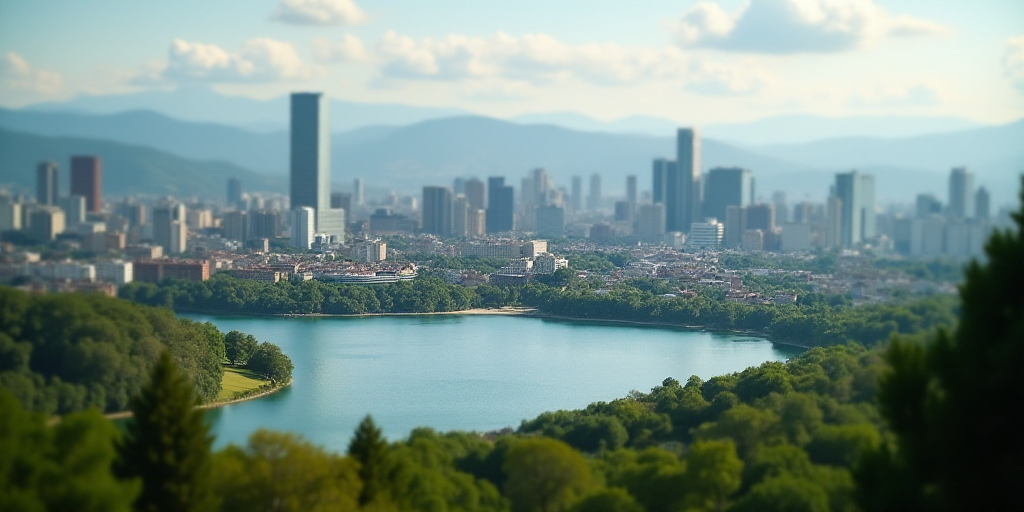Understanding Gentrification
Before 2010, Mexico City’s affordable housing policy was expanding. However, real estate companies started building “mini cities,” leading to a process called gentrification. Gentrification is the urban and social restructuring of a depressed or deteriorated area, causing lower-income residents to be displaced by wealthier ones.
Luis Alberto Salinas Arreortua, a geographer and researcher at the UNAM’s Institute of Geography (IGg), explains, “Gentrification is a process of restructuring social relationships in space.” It benefits large real estate firms and businesspeople in the housing sector, who build for higher-income populations seeking desirable urban features like green spaces, prime locations, amenities, infrastructure, and cultural zones.
This situation harms the original inhabitants of a neighborhood or area, forcing them to migrate due to rising living costs.
Characteristics of a Gentrified Area
Although gentrification is controversial in urban studies due to its negative consequences for displaced populations, it also generates resources and demands new services in established cities.
Gentrified neighborhood changes include renovated homes, new buildings, and the arrival of new businesses. These changes primarily favor middle- to high-income populations.
What Sparked the Gentrification Controversy in Mexico City?
These changes began in mid-20th century with migration from rural areas to cities and from industrial cities to service-oriented ones, according to Lorena Umaña Reyes, a UNAM doctorate in Political and Social Sciences.
Umaña Reyes’ research, “Processes of Gentrification in Mexico City in the 21st Century,” reveals that this century saw accelerated urban transformation causing displacement due to real estate investments, space revitalization, and urban landscape modifications.
During this period, the popular housing construction policy expanded urbanward to peripheries, enabling low-cost housing access but in small sizes in distant locations. However, by 2010, real estate companies began constructing mega-projects marketed as “mini cities,” combining residential, commercial, and entertainment spaces.
Simultaneously, the Mexico City government initiated a policy to protect patrimonial zones, ecological protected areas, public spaces, and central neighborhood rehabilitation.
Reforma Norte: Gentrification in 2023
On June 4, 2023, the Frente Antigentrificación de la CDMX organized the first protest against gentrification in Mexico City, starting at Parque México and ending at the Estela de Luz on Paseo de la Reforma.
The protest, initially peaceful, turned chaotic due to vandalism and xenophobic expressions. This event reignited a fire started in February 2023 when Tepito learned that real estate groups named a part of their historic area “Reforma Norte” to increase condominium value.
Who would want to buy an apartment in Tepito, famous for being the “Barrio Bravo” of Mexico City, an ungovernable and anarchic area?
The UBK Group, responsible for marketing Gorostiza 57’s real estate project, promoted the sale of apartments in the Morelos colonia in the Historic Center of Mexico City, suggesting a great opportunity to live on the iconic avenue.
Initially dismissed as memes and jokes, the real estate industry’s classist phenomenon is now bearing fruit and threatening life in Mexico City’s diverse neighborhoods.
This protest against gentrification opened a discussion on territorial inequality in Mexico City and set the stage for debating how much the city can grow without leaving its original inhabitants behind.
Key Questions and Answers
- What is gentrification? Gentrification is the urban and social restructuring of a depressed or deteriorated area, causing lower-income residents to be displaced by wealthier ones.
- Who benefits from gentrification? Large real estate firms and businesspeople in the housing sector benefit from gentrification, as they build for higher-income populations seeking desirable urban features.
- What sparked the gentrification controversy in Mexico City? The controversy began when real estate groups named a part of Tepito’s historic area “Reforma Norte” to increase condominium value.
- What are the characteristics of a gentrified area? Gentrified areas show renovated homes, new buildings, and the arrival of new businesses, primarily favoring middle- to high-income populations.
- What is the significance of the 2023 protest against gentrification in Mexico City? The protest opened a discussion on territorial inequality in Mexico City and set the stage for debating how much the city can grow without leaving its original inhabitants behind.






